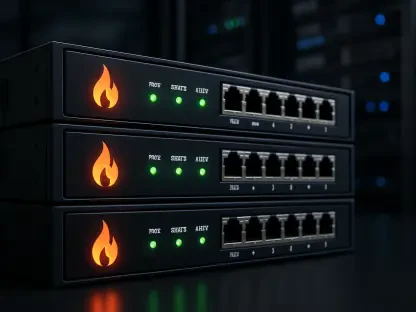I’m thrilled to sit down with Matilda Bailey, a renowned networking specialist whose expertise in cellular, wireless, and next-generation solutions has made her a trusted voice in the tech industry. With a deep understanding of cutting-edge technologies, Matilda is the perfect person to help us unpack the latest advancements in AI-driven security and observability tools. Today, we’ll dive into how agentic AI is transforming security operations, the impact of unified security platforms, and the role of AI in enhancing IT observability for enterprises. Let’s explore how these innovations are shaping the future of network management and cybersecurity.
How does agentic AI redefine the way security teams operate in modern environments?
Agentic AI is a game-changer for security teams because it goes beyond traditional automation. It’s about intelligent systems that can independently analyze, prioritize, and even respond to threats in real-time. Unlike older AI tools that mostly flagged issues for human review, agentic AI can take proactive steps, like evaluating alerts or orchestrating complex workflows. This means security analysts can focus on strategic decision-making rather than getting bogged down by repetitive tasks, ultimately speeding up threat response in today’s fast-paced, complex environments.
What unique advantages does agentic AI bring to handling security alerts compared to earlier methods?
The biggest advantage is its ability to reduce noise and focus on what matters. For instance, tools powered by agentic AI can evaluate and prioritize alerts, explaining their significance so analysts aren’t overwhelmed by a flood of notifications. This cuts down on alert fatigue significantly. Earlier methods often relied on manual triage or basic rule-based systems, which couldn’t keep up with the volume or sophistication of modern threats. Agentic AI brings context and intelligence to the table, ensuring the most critical issues surface first.
Can you walk us through how AI can transform natural language into actionable security strategies?
Absolutely. One of the most exciting developments is the ability to translate natural language into functional security playbooks. Imagine a security analyst describing a response plan in plain English—like, “If a phishing alert triggers, notify the team and isolate the affected system.” Agentic AI can take that input, interpret the intent, and build a tested, automated workflow to execute those steps. This democratizes security operations, allowing even non-technical team members to contribute to strategy without needing deep coding skills.
How does a unified security platform streamline workflows for teams dealing with diverse threats?
A unified platform pulls together disparate tools—think threat detection, incident response, and user behavior analytics—into one cohesive experience. Instead of juggling multiple dashboards or stitching together insights from different systems, teams get a single view of their environment. This cuts down on context-switching and helps correlate data faster, which is critical when responding to sophisticated attacks. It also means less training overhead since everything operates within the same framework, making it easier to onboard new team members.
What challenges in security operations are addressed by integrating tools like automation and behavioral analytics into one system?
One major challenge is fragmentation. Historically, security teams had to piece together point solutions, which created blind spots and slowed response times. Integrating automation and behavioral analytics into a single system addresses this by providing end-to-end visibility and automating repetitive tasks. For example, if an unusual user behavior is detected, the system can automatically trigger an investigation or quarantine without manual intervention. This not only speeds up response but also reduces the risk of human error in high-pressure situations.
How does AI enhance observability to help IT teams manage complex enterprise systems?
AI in observability is like having a super-smart assistant that never sleeps. It automates the collection of telemetry data, detects anomalies, and even pinpoints root causes of issues before they escalate. In complex enterprise systems, where you’ve got applications, networks, and infrastructure all interacting, AI can correlate data across these layers to provide actionable insights. This means IT teams spend less time troubleshooting and more time optimizing performance, which is crucial for maintaining uptime and user satisfaction.
Can you explain how AI-driven troubleshooting identifies the underlying causes of IT incidents?
AI-driven troubleshooting works by analyzing vast amounts of data from across the IT environment—logs, metrics, traces, you name it. It looks for patterns or anomalies that might indicate a problem, then correlates those with historical data or known issues to identify the root cause. For example, if an application is running slow, the AI might trace it back to a spike in network latency or a misconfigured server. By presenting this analysis to IT teams, it eliminates the guesswork and speeds up resolution, often before end-users even notice a problem.
What role does AI play in monitoring the performance and behavior of large language models in enterprise settings?
AI monitoring for large language models, or LLMs, is becoming critical as enterprises adopt these technologies. It tracks metrics like response quality, computational cost, and resource consumption, ensuring the models are performing as expected. Beyond that, it can flag unusual behavior—like if a model starts generating biased or inaccurate outputs—which could indicate a training issue or a security breach. This kind of oversight is essential for maintaining trust in AI systems, especially when they’re integrated into customer-facing or decision-making processes.
How do you see the future of AI in observability and security evolving over the next few years?
I believe we’re just scratching the surface. Over the next few years, AI will become even more autonomous in both observability and security, moving from assistive roles to truly predictive and prescriptive capabilities. We’ll see systems that not only detect and fix issues but anticipate them based on trends and external threat intelligence. Integration will deepen, with AI bridging gaps between security, IT operations, and business outcomes, providing a holistic view of how technical performance impacts revenue or customer experience. It’s an exciting time, and I expect AI to become the backbone of resilient, adaptive enterprise environments.









